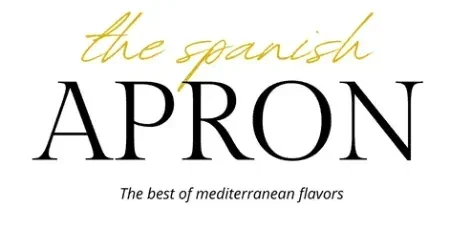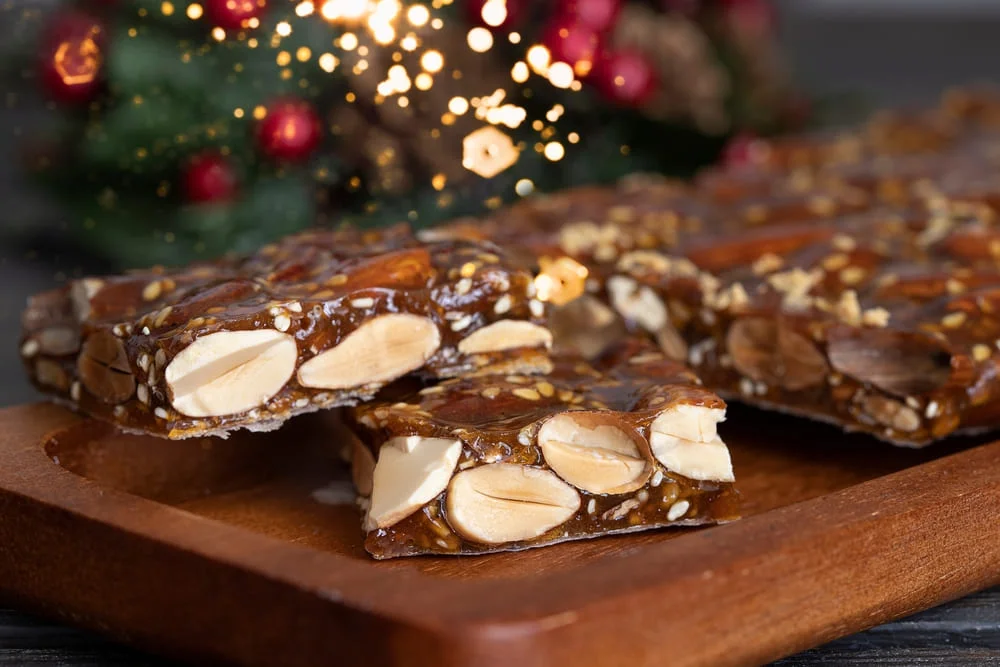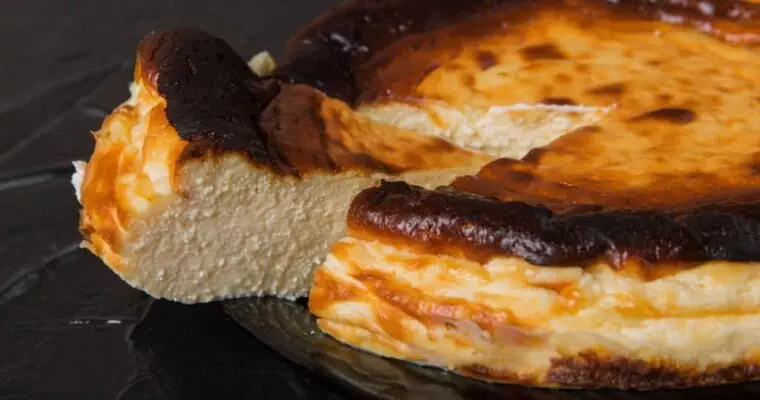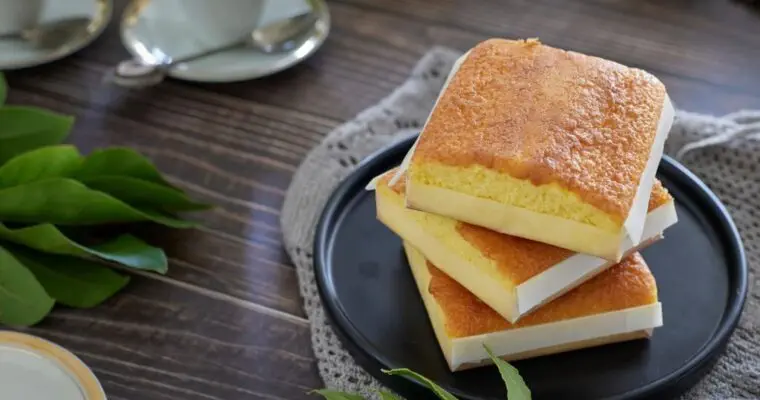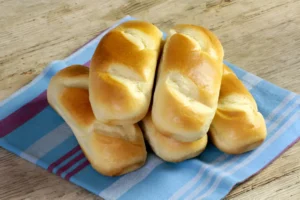Guirlache, an almond brittle, is one of Spain’s most beloved traditional sweets, especially around Christmas. Known for its crunchy texture and rich, caramelized flavor, this treat has deep roots in Spanish history. Its origins trace back to the Arab influence in Spain, but its popularity truly soared in the 19th century, particularly in regions like Aragon, Catalonia, and Valencia.
Table of Contents
The Origins of Guirlache Recipe: Arab Heritage and French Influence
It’s fascinating that a candy with clear Arab origins had a French name. The word “guirlache” comes from the French term “grillage,” meaning something toasted. The Arabs introduced Spain to a variety of sweets made with almonds and honey, including nougat (turrón) and guirlache. However, it wasn’t until the 19th century, when sugar and almonds became more accessible, that guirlache became widely popular across Spain, especially in the northeast regions.
As you might know, this transformation came with the French influence, which popularized the dessert under its now common name. A historical curiosity that shows how cultures blend through the simplest things, like a traditional Christmas dessert.
Key Ingredients for Making this Guirlache Recipe
The simplicity of guirlache is one of its charms. It requires only a handful of ingredients:
- Almonds (raw, whole)
- Sugar
- Honey
- Lemon juice
- Water
- Sesame seeds (optional for added texture)
Almonds and honey ensure a rich, authentic flavor, while lemon juice helps balance the sweetness.
Step-by-Step Guide to Traditional Guirlache Recipe
- Toast the almonds: Begin by toasting the almonds in the oven at 180°C (350°F) until they are golden and fragrant. This step enhances the flavor and crunch.
- Make the caramel: Combine sugar, honey, water, and lemon juice in a saucepan. Heat slowly, stirring until the sugar dissolves. Let it simmer without stirring until the mixture turns a deep golden-brown caramel.
- Combine with almonds: Quickly stir the toasted almonds into the caramel mixture, coating them evenly.
- Shape the guirlache: Pour the hot mixture onto a greased surface or parchment paper. Use a spatula or rolling pin to spread it into a thin, even layer.
- Let it cool: Allow the guirlache to cool completely before breaking it into pieces.
Tips for the Perfect Guirlache Recipe
- Monitor the caramel closely: Caramel can quickly burn, so keep a close eye on the color as it turns from light to dark amber.
- Work quickly: Once the caramel is ready, move fast to coat the almonds and spread the mixture before it hardens.
- Use fresh almonds: The crunch and flavor depend heavily on using high-quality, fresh almonds.
- Optional sesame seeds: For a twist, sprinkle sesame seeds on the mixture before it cools to add texture and a subtle, nutty flavor.
Regional Variations of Guirlache in Spain
While guirlache is often associated with Aragon, it has variations across different regions of Spain. In Valencia, for example, guirlache might be made with local almonds, known for their intense flavor. In Catalonia, some recipes include sesame seeds or anise for a slight variation in taste. Each region adds its own touch, making guirlache a versatile sweet that reflects Spain’s diverse culinary traditions.
Nutritional Benefits of the Ingredients
Guirlache, while a sweet treat, does have some surprising health benefits thanks to its almond content. Almonds are packed with vitamin E, magnesium, and healthy fats that can support heart health. While it’s still a sugary treat, indulging in guirlache in moderation offers some nutritional value.
Guirlache Curiosities: From the Arab Court to Modern Kitchens
Guirlache’s journey from a medieval Arab confection to a French-named holiday staple is a testament to how culinary traditions evolve. In medieval Spain, almonds, and sugar were expensive ingredients, so guirlache was a luxury that few could afford. Today, it has become a cherished holiday treat for families across Spain, enjoyed during Christmas and other festive occasions.
How to Enjoy Your Guirlache Recipe During Spanish Festivities
In Spain, guirlache is most commonly enjoyed during the Christmas season. Families often prepare it at home or buy it at local markets alongside other traditional sweets like turrón, polvorones, and mantecados. It’s a perfect snack to share with loved ones after a big holiday or as part of a festive dessert table.
Christmas Recipes Related to Guirlache
Guirlache fits perfectly into the wider world of Spanish Christmas sweets. Other popular treats include turrón, a nougat made from almonds and honey, and polvorones, crunchy almond cookies that melt in your mouth. These traditional confections, along with guirlache, showcase the Spanish love for almond-based desserts during the holidays.
Frequently Asked Questions About Guirlache
- What is the difference between guirlache and turrón?
Turrón has a softer texture, while guirlache is a hard, brittle candy. - Can I make guirlache without honey?
Yes, but honey adds a depth of flavor and richness that sugar alone can’t replicate. - How do I store guirlache?
Store guirlache in an airtight container at room temperature to keep it crisp.
Conclusion: The Sweet Legacy of Guirlache in Spanish Cuisine
Guirlache may have humble origins, but it has become a symbol of Spanish tradition and festivity. From its Arab beginnings to its French-named renaissance, this delicious brittle reflects the rich history and cultural fusion that defines Spain. Whether enjoyed as part of a Christmas celebration or simply as a treat, guirlache continues to hold a special place in Spanish culinary heritage.
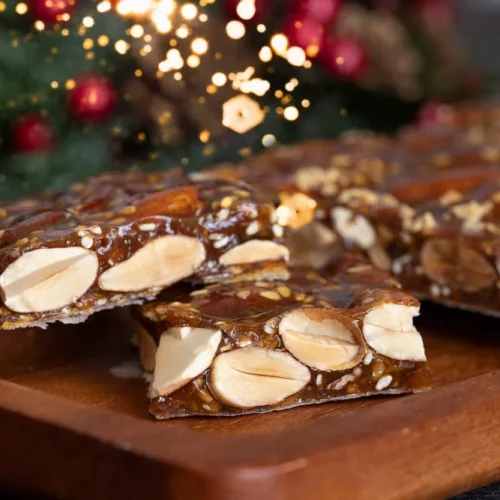
4 Tips for the Perfect Spanish Guirlache Recipe
Ingredients
- 2 cups (300g) Raw whole almonds
- 1 cup (200g) Granulated sugar
- ⅓ cup (80ml) Honey
- 2 tbsp Water
- 1 tbsp Lemon Juice
- Sesame seeds (optional, for topping)
Instructions
- Toast the AlmondsPreheat the oven to 350°F (180°C). Spread the almonds in a single layer on a baking sheet. Toast them in the oven for about 8-10 minutes, or until they are golden brown and fragrant. Keep an eye on them to avoid burning. Remove from the oven and set aside.
- Prepare the CaramelIn a medium saucepan, combine the sugar, honey, water, and lemon juice. Cook over medium heat, stirring constantly, until the sugar dissolves and the mixture begins to bubble.Stop stirring once the sugar dissolves and let the mixture simmer. Continue cooking until the mixture turns a golden amber (around 10 minutes). Watch it closely to avoid burning.
- Combine Almonds with CaramelAs soon as the caramel reaches the desired color, remove the pan from heat. Quickly add the toasted almonds to the caramel, stirring them in to ensure they are fully coated.
- Shape the GuirlacheImmediately pour the almond-caramel mixture onto a greased baking sheet or parchment paper. Use a spatula or a greased rolling pin to spread it out evenly into a thin layer (about ½ inch thick). If desired, sprinkle sesame seeds on top for added texture.
- Let it CoolAllow the guirlache to cool completely at room temperature, which should take about 15 minutes. Once fully hardened, break it into pieces by hand or cut it into squares with a sharp knife.
